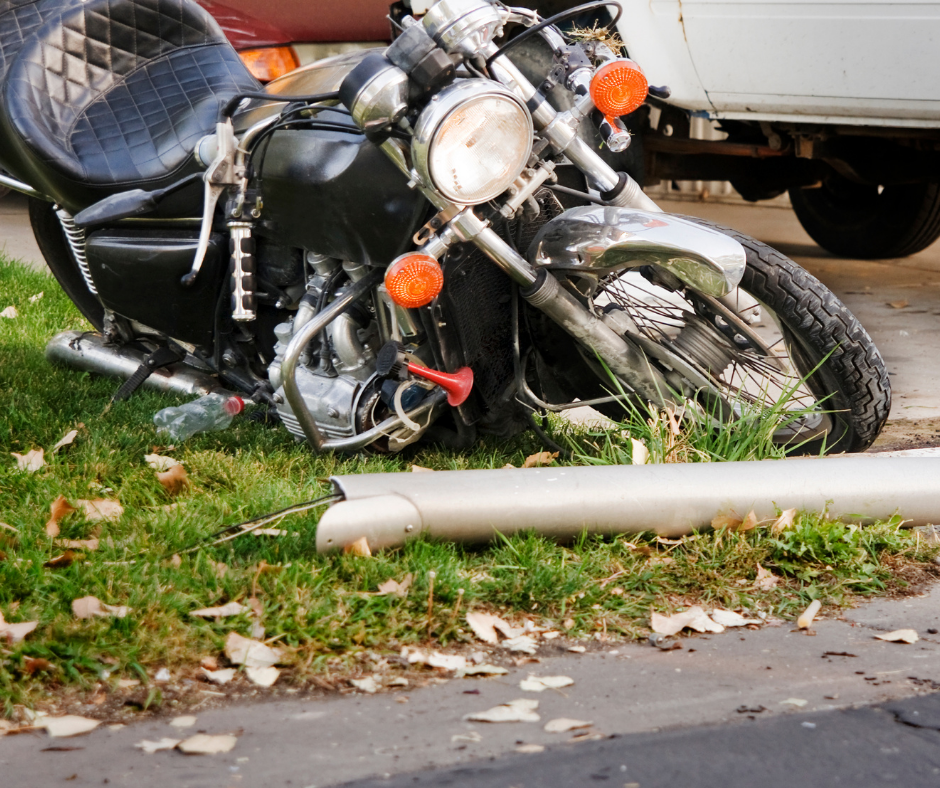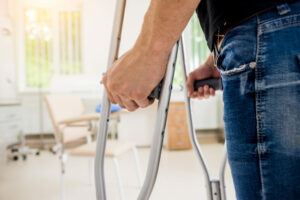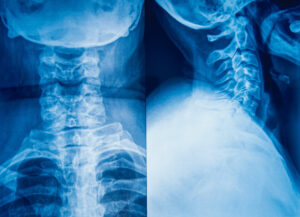
12 Most Common Motorcycle Injuries
Motorcyclists do not have the same protection afforded by a motor vehicle, so traffic accidents involving a motorcycle often result in injury—sometimes minor, but often serious or fatal. The most common motorcycle accident injuries include:
1. Traumatic Brain Injury (TBI)
Motorcycle accidents lead to TBIs when the impact of the collision moves a person’s brain inside his or her head; or, a direct head trauma occurs when a biker’s head hits the road.
The most common type of head injury such as TBI is a concussion. Concussions and more severe TBIs that are a result of head traumas alike put motorcyclists at risk for long-term complications related to their brain function.
2. Spinal Cord Injury
Even minor spinal cord injuries come with serious long-term consequences. A motorcycle accident can cause a partial or complete tear of the spinal cord.
Depending on the severity of the injury, motorcyclists who suffer a spinal cord injury face partial or full paralysis.
The specific loss of function correlates with the part of the spine that is injured. Spinal cord injuries closest to the brain result in the most functional loss and typically lead to tetraplegia, which is full-body paralysis from the neck down.
3. Lower-extremity Injury
Riding a motorcycle leaves a biker’s lower extremities wide open for a leg injury when an accident occurs.
Motorcycle accidents do not always throw bikers off their bikes. Many times, the motorcycle falls over with the biker still holding on. This often results in broken or crushed lower extremities, including legs, ankles, and feet which would lead to disfigurement.
In the worst-case scenarios, doctors might have to amputate a crushed leg with lost blood flow to prevent the spread of infection, which can ultimately lead to death.
4. Internal Bleeding
The impact of a motorcycle crash can cause all types of bumps, bruises, and internal injuries. Internal bleeding is serious and often an indication of a potentially fatal injury.
Internal bleeding is often a result of damaged blood vessels, but can also indicate organ damage.
Sometimes bikers refuse medical treatment because they do not have visible injuries. Yet internal pain, especially in the abdomen, can indicate a much greater problem, and requires medical diagnosis as soon as possible.
5. Broken Bones/Fractures

When a motorcyclist loses control of their bike or collides with another vehicle, a common injury from the impact is often fractures. Sometimes broken bones are simple fractures that heal with time and immobilization. Other times, fractures include multiple broken bones in one area, requiring one or more surgeries for reconstruction.
A motorcyclist who suffers multiple fractures faces continued pain and discomfort, and potentially has to cope with arthritis in and around the affected area.
6. Road Rash
Road rash is the term that refers to the wounds a biker suffers if his or her body is thrown from the bike and slides across the pavement, gravel, or ground beneath.
Road rash can be minor, especially when bikers wear protective gear. In more severe cases, however, the friction from sliding on the road leaves open wounds with dirt, gravel, and/or sand. Road rash must be cleaned and debrided thoroughly to prevent infection.
7. Thorax Injury
A thorax injury is among the most dangerous and potentially fatal motorcycle accident injuries a biker might suffer, especially in a head-on collision that pushes the front of the motorcycle into the thoracic area (chest area), of a motorcyclist.
A thorax injury is a fancy name for a chest trauma, which can include injuries to one or more of the following:
- Heart and major vessels
- Lungs
- Esophagus and airways
- Diaphragm
- Chest wall
8. Facial Injury
Research shows that about 25 percent of all injured motorcycle riders suffer facial traumas, which typically include facial fractures and lacerations. The majority of fractures occur around the mandible (jawbone), but plenty of motorcyclists also suffer midface fractures.
Full-face helmets help protect against facial fractures, which also are a strong indicator of potential traumatic brain injuries.
9. Burns
When fires or explosions happen during a motorcycle crash, bikers are at risk for severe burns. Second-degree, third-degree, and catastrophic burns need immediate medical treatment.
The most severe burns require victims to spend months in a burn unit healing, sometimes in a medically induced coma. Many burn victims also face one or more reconstructive surgeries that typically involve skin grafting.
10. Muscle Damage
Whether as a result of road rash or simply the weight of a heavy motorcycle, bikers involved in a collision can damage their muscles and other soft tissues, including ligaments and tendons leading to serious injuries.
Soft tissue damage can be mild, but tears to a muscle, ligament, or tendon require surgery to reattach or reconstruct the tissue, sometimes causing continued pain and discomfort for motorcycle accident victims.
11. Neck Injury

Even the safest bikers who always wear a helmet face the risk of neck injury during a motorcycle accident.
Neck injuries can hopefully be mild when they only impact the soft tissues in the neck area. Unfortunately, more often than not, motorcycle accidents lead to more severe neck injuries, such as broken neck vertebrae, nerve damage, or spinal cord damage in the neck area.
12. Emotional Trauma
Motorcyclists must develop a sense of confidence and comfort with their bike to ride safely with others on the road. Bikers who suffer the traumatic event of a motorcycle crash also face the mental trauma that comes with the crash. Anxiety, depression, and similar PTSD symptoms are common following a severe traffic accident.
Some bikers might be so traumatized that they choose never to enjoy a ride on their motorcycle again.
What to Do After a Motorcycle Accident
Seek medical attention as soon as possible, even if you do not have symptoms or otherwise “feel fine.” If you are unable to call 911, shout for help or wait for someone to stop who can call an ambulance for you.
After you have visited a hospital for treatment, it is in your best interest to seek the help of a motorcycle accident attorney to find out about your options for compensation for your injuries and other damages
Preventing Severe Motorcycle Injuries
You cannot control the actions of others on the road, but you can prevent severe injuries by practicing common motorcycle safety precautions. You can also take precautions against getting into an accident by understanding the common causes of motorcycle accidents and how to avoid them.
Always wear the right protective gear such as a motorcycle helmet, jacket, boots, and gloves, and drive responsibly.
Receiving Motorcycle Accident Compensation
If you have suffered severe motorcycle accident injuries, contact Miley Legal Group online to schedule a free consultation with one of our compassionate motorcycle accident lawyers, and learn whether you may be eligible for compensation.

